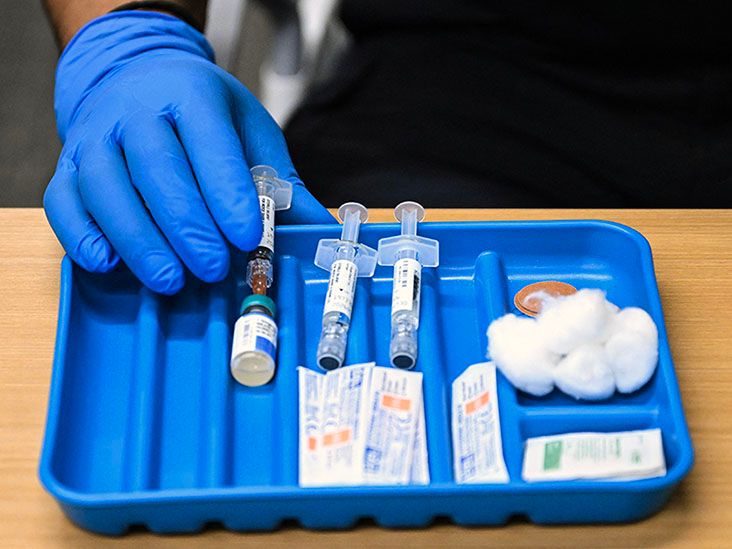Humectants are substances that attract water. In personal care products, they help hydrate the skin, hair, or nails. Hyaluronic acid and glycerin are examples of humectants.
The benefits of humectants depend on the ingredient. In general, however, the effects
Humectants are different from emollients and occlusives. These ingredients are also in many personal care products for dry skin. However, they work by forming a barrier over the skin, trapping moisture inside rather than attracting it. Oils, butters, and waxes, such as lanolin, are examples.
This article discusses humectants and the products that contain them, as well as examples and benefits. It also outlines the difference between a humectant and an emollient and an occlusive.

Humectants are ingredients that attract and bind water. In skin care, they draw water from the deeper layers of the skin to the outermost layer. If air humidity is higher than
In hair care, humectants perform a similar function. They attract water to the hair shaft, helping keep it hydrated.
Examples of products that can contain humectants include:
- face washes
- face serums
- moisturizers and lotions
- face masks
- shampoos
- conditioners
- lip balms
- nail care products
Many ingredients act as humectants,
- glycerin
- urea
- hyaluronic acid
- salicylic acid
- alpha hydroxy acids (AHAs), such as glycolic acid and lactic acid
- propylene glycol
- honey
- sorbitol
All humectants have slightly different properties. Below is some of the research on common humectants.
Strengthen skin barrier
The outermost layer of the skin, the stratum corneum, has an important function of serving as a barrier. It slows the evaporation of water from the skin and helps protect against microbes.
A 2021 review notes that urea helps enhance the stratum corneum by increasing hydration and improving the skin barrier’s integrity. Because of this, it has a long history as a skin care ingredient.
Urea can help with many skin conditions, such as:
Relieve keratosis
An older
Among the participants with hyperkeratosis, the results indicated that the moisturizer:
- removed scales
- increased skin hydration
- reduced thickness of hyperkeratosis
The participants with no skin conditions experienced an improvement in skin barrier function.
Reduce dry skin
As people age, they have a higher risk of developing dry skin. A
Additionally, a 2021 research article notes that the humectant lactic acid can relieve rough, dry skin at concentrations up to
Promote wound healing
Older research from
Another popular group of ingredients for moisturizing the skin and hair are emollients and occlusives. These work by creating a barrier, often consisting of a plant oil or butter, over the skin or hair. Instead of attracting moisture, they trap it beneath this barrier, preventing it from evaporating.
In comparison to humectants, emollients and occlusives tend to be thicker, heavier ingredients.
Emollients
A
- softness
- hydration
- smoothness
- flexibility
Examples of emollients include:
Occlusives
Occlusives are mostly oil-based. They provide a layer on the skin surface that helps protect against water evaporation. This preservation of skin hydration helps prevent dry skin and eczema, reports
Examples of occlusives
- beeswax
- mineral oil
- silicones
- petroleum jelly
- paraffin
- lanolin
Whether a person should use humectants, emollients, or both depends on their skin type.
Emollients and occlusives tend to be heavier ingredients. Some add more oil to the skin and hair, which can be helpful for those with dry skin. However, individuals with oily skin or hair may find this unhelpful.
Some emollients and occlusives are also comedogenic, which means they have the potential to block pores and cause acne.
Humectants, on the other hand, tend to be noncomedogenic and non-oily. They can add hydration without the use of heavier ingredients. Some also have other benefits. For example, AHAs are also exfoliants.
According to the American Academy of Dermatology Association, a person with oily skin should choose skin care products that have “oil-free” and “noncomedogenic” on the label. People with hair that gets greasy quickly may prefer to look for hair products that do not contain much oil, if any.
In contrast, someone with dry skin or hair could benefit from products that contain humectants, emollients, and occlusives.
A humectant is a substance that draws water into the skin, hair, or nails. In the skin, this may come from the deeper layers, or from the air if it is humid enough. Humectants are useful for adding hydration without feeling heavy or oily.
Humectants include ingredients such as glycerin, urea, AHAs, and hyaluronic acid. People can find them in a wide range of personal care products.
Aside from humectants, personal care products often contain emollients and occlusives. While humectants provide hydration, emollients soften the skin, and occlusives help prevent water in the skin from evaporating.
People can consult a dermatologist to identify their skin type and find the best regimen for them.


